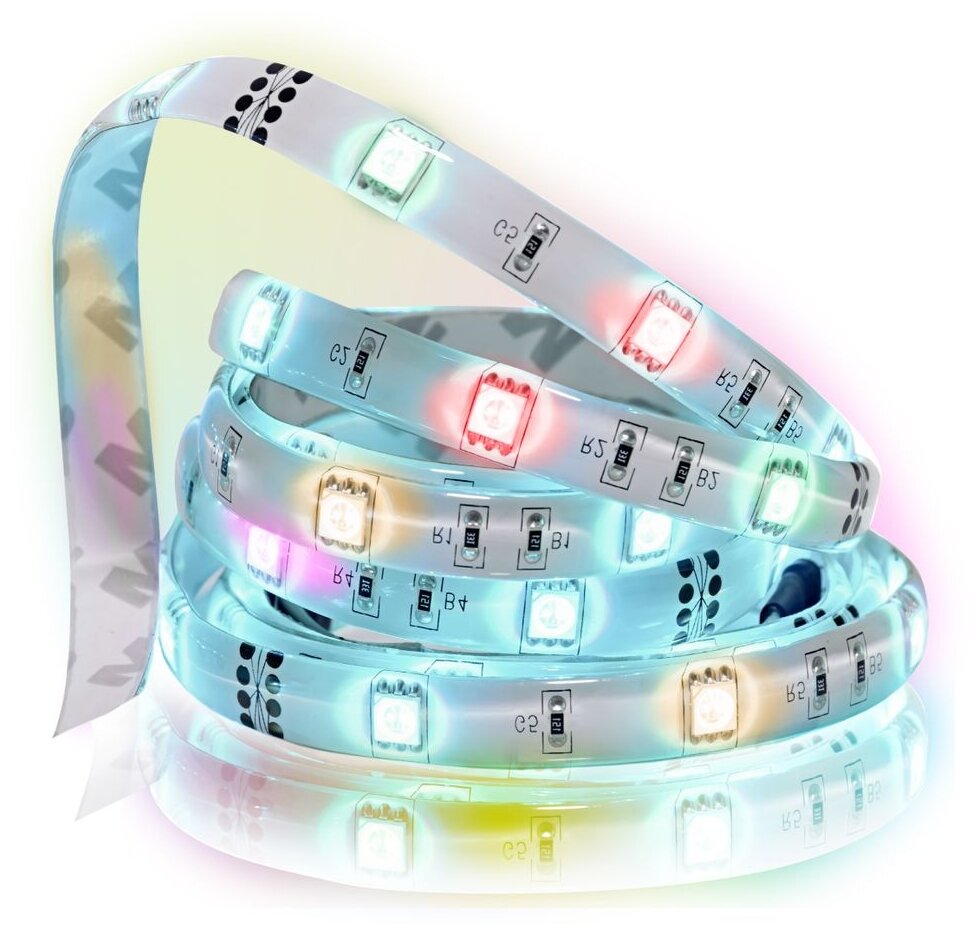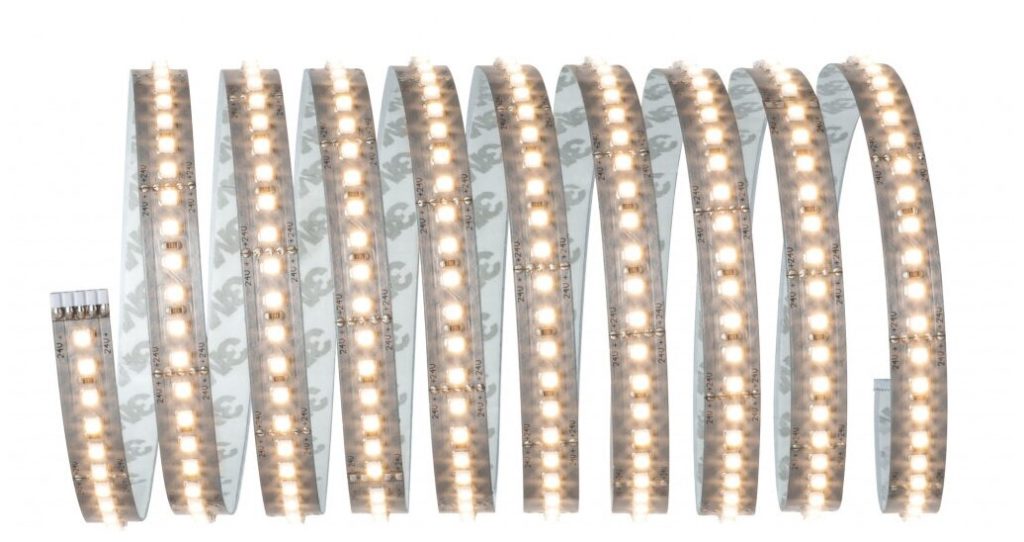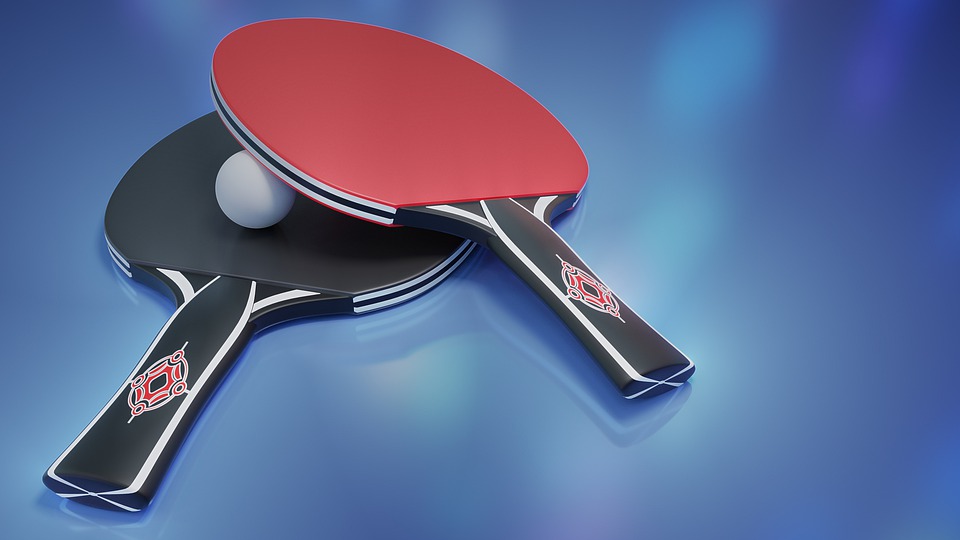Rating of the best LED strips for 2025

LED strips are today one of the most popular solutions for decorative lighting or creating cost-effective basic lighting systems. These may include general house light, and lighting in the car, and a luminous strip over a certain working area of \u200b\u200bthe desk, and even festive decoration with the illumination of any street structure. However, for each of these purposes, an LED strip model with specific technical characteristics will be required.

Content [Hide]
LED strips - general information
The devices in question are a flexible light source, which is based on a foldable printed circuit board, which has LEDs with auxiliary parts on one side. These light sources, due to the use of bright types of SMD LEDs in their design, give increased brightness, while power consumption remains low. Due to their flexible base, such tapes are convenient to use in non-standard design projects in terms of additional lighting, although more often they play the role of the main lighting.
Modern types of light tapes
This lighting equipment can be categorized according to many parameters, but the main ones will remain the technical indicators of the security of the used SMD LEDs and the design features of the lighting elements themselves. Thus, according to the transmission of colors by LEDs, two groups can be distinguished:
- Red-Green-Blue (RGB) tapes - in such devices, each element of light contains three LEDs of three different colors - red, green, blue;
- Monochrome ribbons - in them, each element has only one color (usually cold white).
According to the technical indicator of security, it is already possible to distinguish three groups of tapes:
- Completely enclosed (protection class IP67-68) - used for placement on the streets and in swimming pools without restrictions;
- With silicone coating (protection class IP54-65) - it can be installed in places where there is moisture, but the risk of close contact with water is small;
- Fully open, non-hermetic (protection class IP20-33) - use only indoors in dry rooms.
Design features
The devices in question are manufactured on the basis of a flexible and long printed circuit board, the width of which can vary from 8 to 20 millimeters. The most common samples are powered by a 12 volt source. The tape itself consists of small segments, i.e. separately manufactured board elements. Each such element has three SMD LEDs, provided with a current-limiting resistor. All sections must be connected in series, and each diode will require a voltage of approximately 3.2 volts. From this it can be seen that the overall assembly will require a 9.6 volt supply, so a limiting resistor is installed in the circuit to properly use 12 volt sources. Along its entire length, the ribbon includes separate assembly elements connected in parallel. They should always be of the same design and fed from the same source. There are models that carry SMD-5050 type diodes, which are already connected in separate assemblies of three light elements.Accordingly, to power them, three resistances and three power paths will be required. RGB-type tapes also consist of separate sections of three diodes, but they have each color channel connected separately, which indicates the presence of four tracks at once.

Required supply voltage
As mentioned above, most models require a supply voltage of 12 volts. Infrequently, but still possible, to meet samples of 24 volts. Special power supplies and LED drivers are used to connect the power supply of light tape equipment. The input of the latter is simply supplied with voltage from a standard 220-volt network, and the voltage is stabilized to the desired level (12 or 24 Volts) at the output. It is imperative to maintain a stable voltage and not allow it to rise above the limit specified in the technical documentation for the tape. If the permissible limits are exceeded, the device may overheat, which will lead to the burnout of the diodes in it.
At the same time, if the power supply supplies less than the required voltage to the device, then the light emitted by it will either be extremely dim, or will be completely absent.
IMPORTANT! The modern market can also offer models that do not require the use of a power supply and are directly connected to a standard power supply. Such samples have a high degree of protection, and the tapes are installed inside a special PVC tube.
Required power
The power of LED strips must be known in advance, because the selection of the desired power supply will depend on this indicator. The power indicator will also depend on the type of LEDs used in the design and the density of their arrangement on the base. Today, the following SMD tape types are popular:
- 3528;
- 5050;
- 5630;
- 5730.
It is worth mentioning that the indicated placement density cannot be random, because it is determined by the number of diode elements per 1 linear meter of length. The most common are devices that have 30, 60, 120 diode elements per meter. The density index simultaneously affects the uniformity of the light flux. As a rule, devices with 30 or 60 elements per meter of length are suitable for lighting a small work area. For larger areas or street illuminations, it is worth looking at models with 120 elements.

Brightness indicators
Like power, the brightness indicator depends on the type of diodes installed on the tape and the density of their arrangement. Thus, knowing the brightness of one element, it is easy to calculate the overall indicator for the entire structure. However, everything is not so simple here: some elements, due to the presence of defects, can produce dimmer light, which affects the overall brightness parameters. The same situation can arise if diodes from different manufacturers are located on the tape (which is typical for Asian-made LED strip models). Accordingly, it is better to purchase products from a trusted manufacturer.
It should be noted that outwardly diodes from high-quality brands and fakes are practically indistinguishable, but fakes usually have quality characteristics that are two times inferior to genuine samples. On colored tapes, such mismatches will be visually easily distinguishable, but on monochrome tapes it will be more difficult to distinguish dim light in a separate area.
At the same time, it is worth mentioning that even if there are only high-quality diode elements in the tape, the brightness it produces can change. This circumstance is a direct consequence of the stability of the voltage in the power grid and the frequency of occurrence of drops in it.
Connection process
To connect the tape, you will need a power source designed for the desired voltage. In this case, you should pay attention to its power. If the so-called driver is used, then it should have a small additional power reserve (about 30% of its nominal value). This rule also applies to direct connection to the 220-volt network. The connection itself can take place both in whole coils of 5 meters, and in small segments. In any case, they are connected in the same way, provided that the correct polarity is observed, and sources of suitable power and voltage are used.
It is necessary to make a reservation that the maximum length of each strip should not be more than 5 meters. This rule is due to the fact that with a longer length there is a high risk of a voltage drop on the copper tracks deposited on the tape. In addition, if a serial connection is used, then the last section of the tape in the chain will not glow so brightly, and the first section, on the contrary, will overheat. However, this rule does not work for low-power LED strips, the number of which in a common circuit does not exceed three.
In order to increase the tape length by more than 5 meters, the next strip must be connected in parallel to the power source. In this case, the driver power indicator must be calculated in advance for connecting several sections. This method is considered not very convenient, since the dimensions of the transformer increase accordingly with increasing power. The solution may be to use for each section of its own driver with a small power.
When using the parallel connection method from a single source, the cables must be connected from two sides at once - from the beginning of the tape and from its end.This will unload the tape tracks when conducting a "large" current, and the glow over the entire area will become more uniform.
If necessary, the length of the tape can be arbitrary, deviation is allowed both up and down. At the same time, you can cut the tape only in a certain place - it is marked with the “scissors” icon and has open copper contacts. A cut in an arbitrary place, of course, will not completely disable the entire structure, but will only turn off one small segment (which, as a result, will still have to be cut out).

If it is necessary to connect several separate sections into one large tape, it is required to connect the contacts of these sections, strictly following the polarity rule, i.e. "plus" connects to "plus", and "minus" to "minus". Soldering is considered the best connection method, but to simplify the whole procedure, it is possible to use a variety of connector options. They are usually some kind of snap-on design with contact pads and clamping pins. After docking such a connector with an LED strip, its contacts will rest against the contact pads of the tape, and inside the entire hitch will be fixed.
To adjust the brightness in the devices under consideration, dimmers are used, which are special digital or analog equipment. The latter are made on the basis of semiconductors and their action is based on the principle of delimiting the current from the power supply, while the operating voltage does not change. Digital variations use in their work the principle of pulse-width modulation of the received power supply.The dimmer is mounted in the power supply circuit of the tape, roughly speaking, it is installed between the power supply and the tape strip. When choosing the right dimmer, you should pay attention to the maximum current level that it can regulate. This indicator should be slightly more than the maximum current consumed by the tape device.
Multi-color tape models must be connected using a special RGB controller, which is designed to control each color diode on the strip separately. Again, for correct operation, you will need not to exceed a total length of 5 meters. There are two wires to the 220-volt network controller, but four wires go from the controller to the strip. Of these, one is common, and the other three control blue, red and green diode light sources. If you want to connect several multi-color strips at once, with their total length exceeding 5 meters, then such a connection occurs in a parallel way. In cases where the total power of the controller is not enough to provide several bands, then each subsequent multi-color band device must have a "repeater" - simply a "signal amplifier". This amplifier is connected to the controller, the signal of which it will duplicate already at its own output, when it passes it to the next section of the tape.
IMPORTANT! It is worth remembering that "repeaters" must be separately connected to their own power supply and they are also designed for a certain power indicator.
Mounting Features
Almost all diode light tape models have an adhesive base, through which they are easy to fix on almost any smooth surface.To do this, it is enough just to degrease the desired area on which you need to install the light strip, remove the protective film from it and lean it against the surface. The whole process works on the principle of double-sided tape. However, the density and durability of the installation will depend on the heat generated by the tape and the need for additional cooling. According to the type of heat release (for fastening), the tapes are divided into two groups - up to 14 W / m and more than 14 W / m. Variants emitting up to 14 W/m can dissipate heat naturally, i.e. they do not need additional cooling. They will have enough natural air circulation and they will not peel off from the bearing surface.
If the strip light model generates heat close to 14 W / m, then it will need special cooling - it must be mounted on a surface with good heat transfer. In extreme cases, it is possible to use a substrate based on aluminum tape. If the heat is released in very large quantities, then you simply cannot do without an aluminum profile for fastening.
If the tape is connected directly to the network without a power supply and is enclosed in a special transparent PVC box, then the box itself is attached using special brackets.
Difficulties of choice
The choice of the devices under consideration should begin with determining its future purpose, and based on this, a model should already be selected according to specific characteristics. For example, to place the tape on the street, you will most likely need the longest model, which is easy enough to connect into several segments at once. At the same time, all these segments must be well protected from the negative effects of weather conditions.The best street option is considered to be a tape enclosed in a PVC box and directly connected to a 220-volt electrical network. The PVC tube will reliably protect all vulnerable structural elements from street precipitation.
For lighting suspended ceilings, it is better to use low-power models with a degree of protection of IP20 (i.e. without any coating). Such a tape consumes very little energy, does not require an additional cooling system, and adheres perfectly and securely directly to the ceiling. However, such illumination will be only decorative. In the case of creating a basic lighting system, a more powerful tape with greater heat dissipation will be required, so it is better to immediately stock up on an aluminum profile (or the base for installation must have a high thermal conductivity).
To install the tape in the bathroom, the model must be provided with special moisture protection, which indicates the need to use a standard of at least IP54 class. From this class, the use of a silicone coating in the construction of light strips begins, which does not allow moisture to penetrate inside.
Rating of the best LED strips for 2025
Budget models
3rd place: "Feron LS603 27744 (12V white cold)"
votes 0
A simple model with the characteristics of 60SMD(2835)/m, 4.8W/m, 1m, IP20, 12V, emits a bright white glow of a cold shade. Suitable for indoor use. It is often used for laying in non-standard structures in suspended ceilings, decorative partitions, etc. The model is made using LED elements, which do not heat up much during operation, are not subject to flicker, consume a minimum of energy and will last a very long time. The recommended cost for retail chains is 106 rubles.

- Very affordable price;
- Gentle technical characteristics;
- Minimum power consumption.
- A very small bay - only one meter.
2nd place: "FERON LEDх30/m, 5m, 7.2w/m, 12v, white/basic white 27641"
votes 0
Another budget option, designed for indoor use. The design is distinguished by the use of high-quality components, the surface of the strip itself can withstand increased tensile loads. Cutting into separate segments and mounting several bays into a long network at once does not present any particular difficulties. The total length of the tape in the bay is 5 meters. The recommended cost for retail chains is 277 rubles.

- Possibility of use at different lengths;
- Recommended for general lighting;
- Easy installation.
- Not detected.
1st place: "ERA LS2835-60LED-IP65-W-eco-5m B0035590"
votes 0
An excellent choice for use as a decorative niche and false ceiling border illumination. The model itself has an increased protection class (class 65), which makes it possible to use it even in rooms with high humidity. Connection is possible directly to the network without using a power supply. The entire structure is sealed with silicone sealant. The recommended cost for retail chains is 593 rubles.

- Maximum length in a bay;
- Ease of installation;
- Quality manufacturing.
- Not suitable for basic lighting.
Middle price segment
3rd place: "Gauss LED Elementary 2835 60-SMD 4.8W 12V DC 5m 355000605"
votes 0
This option is focused exclusively on decorative use. With it, it is easy to make an illumination for a Christmas tree or illuminate a toy children's house. Due to the use of cold light, the model does not emit much heat and therefore it can also be mounted on fire-melting structures. Characterized by the issuance of bright light. It is very easy to cut the entire five-meter bay into separate sections to create more flexible pattern patterns. Their subsequent connection is not difficult. The recommended cost for retail chains is 600 rubles.

- Bright light;
- Easy cutting and joining;
- Doesn't give off much heat.
- Recommended for decorative use only.
2nd place: "APEYRON in blister 12V, ST, 14.4W/m, smd2835 212BL"
votes 0
This representative of the "Standard" line from a well-known brand operates on direct current at a voltage of 12 volts. Thanks to the 2835 LEDs, which emit a luminous flux of 1400 lm/m, the strip is an excellent solution for the production of LED luminaires based on aluminum profiles. Due to the increased brightness, with the help of such lamps it is possible to organize basic lighting not only in residential premises, medical and educational institutions, but also in sales areas with high ceilings. Compared to conventional incandescent bulbs, the LED strip is equivalent to several bulbs with a total power of 140W. This strip model has a cold white glow color with a color temperature of 6500 K. When choosing this model, it is important to take into account such a parameter as the power used in order to choose the right transformer.For this model, this figure is 14.4 W per meter. The degree of protection of this product is IP20, which means that it should only be used in dry and ventilated areas. It is possible to cut off the LED strip in specially marked places, which are placed every 25 millimeters. The compact dimensions of the product with a width of 10 mm and a base of flexible two-layer copper substrate provide a huge advantage in fulfilling many design fantasies. The recommended cost for retail chains is 804 rubles.

- Versatility;
- Great functionality;
- Compact dimensions.
- High heat dissipation.
1st place: "Smart Wi-Fi LED strip Nitebird 2.8 m, multi color SL1"
votes 0
This product is designed to control the color illumination of a specific area or object. Control is possible through voice assistants Amazon Alexa, Google Assistant. Additionally, manual control and remote control via a smartphone using the application of the manufacturer "Gosund" is possible. Power consumption 5 watts, Wi-Fi protocol - 2.4 GHz. It is possible to connect a dimmer. The recommended cost for retail chains is 890 rubles.

- Various control options;
- Non-standard color solutions;
- Easy installation.
- Purely decorative use.
Premium class
3rd place: "Apeyron 220V with accessories 10-58"
votes 0
This product is a completely turnkey solution - no more than 2 minutes will pass from the moment of unpacking to the start of work. There are about 5 meters in the tape, it has 60 LEDs, and it shines very warmly and softly.The light is perfectly distributed throughout the surrounding space. It comes with a block that is compatible with other similar products. It cuts very well, for this it has marks on it, according to which it needs to be done. Additionally, it is smeared with silicone sealant at the junction of the power cord and the plug - water is definitely not afraid of it. The recommended cost for retail chains is 1700 rubles.

- Completely turnkey solution;
- The presence of silicone sealing;
- Warm and soft light.
- Not detected.
2nd place: "Elektrostandard SLS, 01 WW, IP20 Kit a049844"
votes 0
This product provides a completely industrial focus - it is designed to illuminate large work areas or sales areas. It has an increased heat dissipation, so installation is possible only on an aluminum profile. The light gives out strict and cold, which clearly indicates an industrial purpose. It is possible to connect an almost unlimited number of 5-meter segments into a monolithic circuit, because each is powered by its own transformer. The recommended cost for retail chains is 3200 rubles.

- Powerful and bright glow;
- The presence of a transformer in the kit;
- Strength and durability designed for industrial use.
- Narrow specialization.
1st place: "LED strip with driver FERON LS606 90W 60SMD5050/m 14.4W/m 12V 5000*10*2.32mm RGB 27706"
votes 0
Such a model can be used as an element of decor or as a backlight for shop windows and counters. The product has a length of 5 meters. The tape emits red, green and blue light. The kit includes a driver.Self-adhesive base allows you to mount the product on any surface. The recommended cost for retail chains is 3500 rubles.

- Extremely complete set;
- Improved work through the driver;
- Maximum length.
- Not detected.
Conclusion
Although the use of LED strips began relatively recently, they have already managed to gain sufficient popularity among the consumer. They are considered the latest and somewhat non-standard lighting devices, mostly designed for decorative use. Also, they are often used in the design of outdoor advertising structures. But even in indoor conditions, they will easily find their application - the design of multi-level ceilings, the illumination of niches, the illumination of certain work areas. Today's LED strip can easily replace both a chandelier and a sconce, especially since it will not “eat” so much electricity, while giving out bright and high-quality lighting.
new entries
Categories
Useful
Popular Articles
-

Top ranking of the best and cheapest scooters up to 50cc in 2025
Views: 131650 -

Rating of the best soundproofing materials for an apartment in 2025
Views: 127690 -

Rating of cheap analogues of expensive medicines for flu and colds for 2025
Views: 124518 -

The best men's sneakers in 2025
Views: 124032 -

The Best Complex Vitamins in 2025
Views: 121939 -

Top ranking of the best smartwatches 2025 - price-quality ratio
Views: 114979 -

The best paint for gray hair - top rating 2025
Views: 113394 -

Ranking of the best wood paints for interior work in 2025
Views: 110318 -

Rating of the best spinning reels in 2025
Views: 105328 -

Ranking of the best sex dolls for men for 2025
Views: 104365 -

Ranking of the best action cameras from China in 2025
Views: 102215 -

The most effective calcium preparations for adults and children in 2025
Views: 102011









